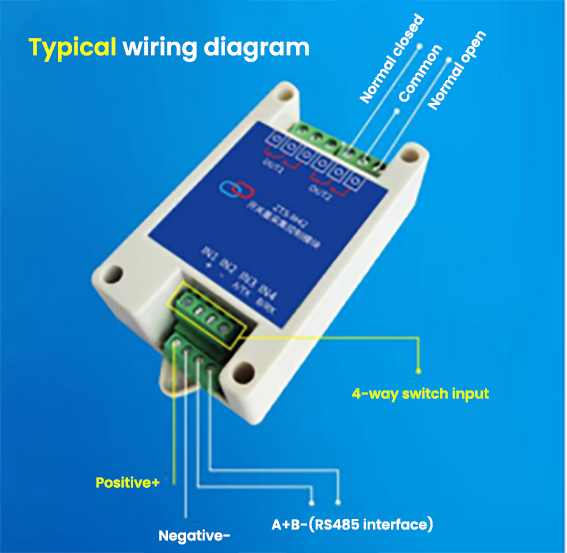The XDB1003-3 series relay module from XIDIBEI SENSOR & CONTROL offers a versatile solution for relay control in industrial environments. It features two-way relay control and supports multiple input modes, including non-locking, self-locking, and interlocking linkage modes. With support for RS485 or RS232 communication interfaces and a configurable baud rate, the module is highly adaptable. It offers reliable performance with a wide voltage range (DC7-30V), optocoupler inputs, and relay outputs, making it ideal for various automation tasks. This module is designed for durability, with a rated voltage of up to 250VAC and a temperature range from -40℃ to 85℃.
1.DC7-30V
2.Relay output contact isolation
3.Communication interface supports RS485 or RS232
4.Communication baud rate: 2400, 4800, 9600, 19200, 38400 (can be modified by software, default 9600)
5.Communication protocol: support standard modbus RTU protocol
6.0-255 device addresses can be set, 5-bit address dip switch can set 1-31 address codes, greater than 31 can be set by software
7.With flash on and flash off function, you can bring parameters in the command, operate the relay to open for a period of time and automatically close
8.With strobe function, the controller relay can be periodically switched on and off


RS485 cascade wiring method

The computer’s built-in serial port is usually RS232, which requires a 232-485 converter (active and isolated converters are recommended for industrial environments). After conversion, RS485 is divided into two wires, A and B. A is connected to the A terminal on the board, and B is connected to the B terminal on the board. The 485 shield can be connected to GND. If there are many devices, it is recommended to use twisted shielded cables and a chain network structure.
1. Switch quantity wiring diagram
Passive input wiring diagram
Active input wiring diagram
2. Relay wiring instructions
